January 2019 Ideas and Innovation
Read the articles selected in January 2019
A gut puch fights cancer and infection
By Nathan E.Reticker-Flynn & Edgar G. Engleman
Source: Nature, 23 January
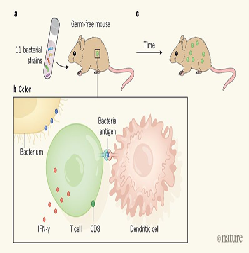
Bacterials contribute to maintain us in health. A particular type of immune cells in the microbiota, called CD8T, is able to recognize and kill infected and cancerous cells. An experiment on mice has discovered that this type of cells in germ-free laboratory conditions is mainly absent.
Read more:
https://www.nature.com/articles/d41586-019-00133-w
Et vous, votre exposome, il est comment?
By Stéphanie Benz
Source: L’Express, 9 January
The exposome, the individual set of not genetical risk factors, promises a revolution in the health sector. The connection between the subject and the whole physical, biological and social environment, involves an infinite series of variables that will help discover new interactions and overcome irrational fears.
Silicon Valley’s original innovators
By Keith A. Spencer
Source: The Guardian Weekly, 18 January
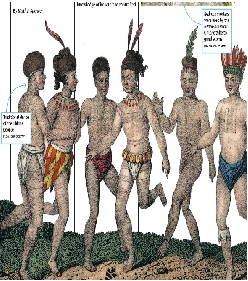
The history of the relations between European conquistadores and native Americans shows that technology’s supremacy over the landscape and styles of life doesn’t involve a deep knowledge of Nature and the human being. Technological progress doesn’t make us necessarily more intelligent , advanced or happy.
La dessalinisation de l’eau de mer crée trop de pollution
By Marc Cherki
Source: Le Figaro, 18 January
The waste from the filtration of salty water for the production of drinking water or water for industrial use, because both of the minerals extracted, and the chemical substances used for the purification, have a direct impact on the marine environment and the food chain.
Das Cern plant den nächsten grossen Beschleuniger
By Sybille Anderl
Source: Die Faz, 16 January
The Cern is planning the next generation of particles colliders, with the aim to develop higher energies. The Future Circular Collider, differently from the current LHC, will make possible to achieve collisions between electrons and positrons, allowing measurements more precise of the matter.
Read more:
For some multiple sclerosis patients, knocking out the immune system might work better than drugs
By Kelly Servick
Source: Science, 15 January
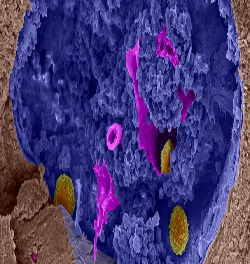
A new study shows for the first time a better efficacy of the hematopoietic stem cell transplantation for the cure of multiple sclerosis, compared to the currently approved drugs. The procedure is already used for the treatment of other autoimmune diseaeses and certain tumors.
Read more:
Is ancient DNA research revealing new truths or falling into old traps?
By Gideon Lewis-Kraus
Source: The New York Times, 17 January
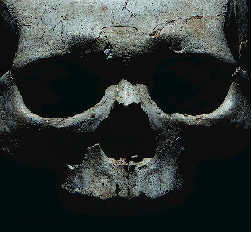
The science of paleogenomics helps understand human roots, expansion and development, sometimes crossing data from other disciplines, sometimes undermining previous knowledge. Ancient DNA ha proved that the evolution of cultures is not coherent, and is marked by movement and contamination.
Read more:
Des languages communs pour la maison connectée
By Didier Sanz
Source: Le Figaro, 15 January
The dream about a home automatically obeying our daily needs and rhythmes will be soon reality, but beside this magic of the objects, the connected products present an invasion into the private life which technology, before the law, is expected to protect us from.
Will humans wipe out humanity?
Source: The Economist, 4 January
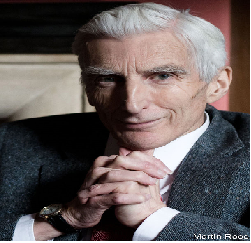
In this interview the astronomer Martin Rees is sceptical about the apocalyptic fears of the new technologies and the fantasy of extraterrestrial civilizations, highlighting the importance of a scientific education and the citizens’ partecipation to the scientific debate.
Read more:
https://www.economist.com/open-future/2019/01/04/will-humans-wipe-out-humanity
Aging Voager 1 spacecraft undermines idea that dark matter is tiny black holes
By Adrian Cho
Source: Science, 9 January

The hypothesis that black holes would have been formed from fundamental particles with nearly any mass fluctuating in the primordial universe, has been weakened by the fact that NASA’s Voyager 1, slipped out of the solar system 6 years ago, doesn’t see the radiation they should produce and that it should see from its position.
Read more:
Quand le processeur copiera le cerveau
By Frank Niedercorn
Source: Les Echos, 8 January
The amounts of data processed by the AI circulate through the dialogue between memory and microprocessor of the current machines. New materials inspired to neuroscience will be able to perform tasks of storage and calculation together with low energy consumption and to mimic the functional organizations of neurons.
Machine learning leads mathematicians to unsolvable problems
By Davide Castelvecchi
Source: Nature, 8 January
The question of learnability is at the core of machine-learning. Researchers have translated the informatic capacity to compress big amounts of data in the mathematical theory of sets, and in particular, in the so far undecidible Cantor’s problem of infinite but not equally-dimensioned sets.
Read more:
https://www.nature.com/articles/d41586-019-00012-4
Info
- Pubblicato il : 04/02/2019 Modificato il : 04/04/2019

